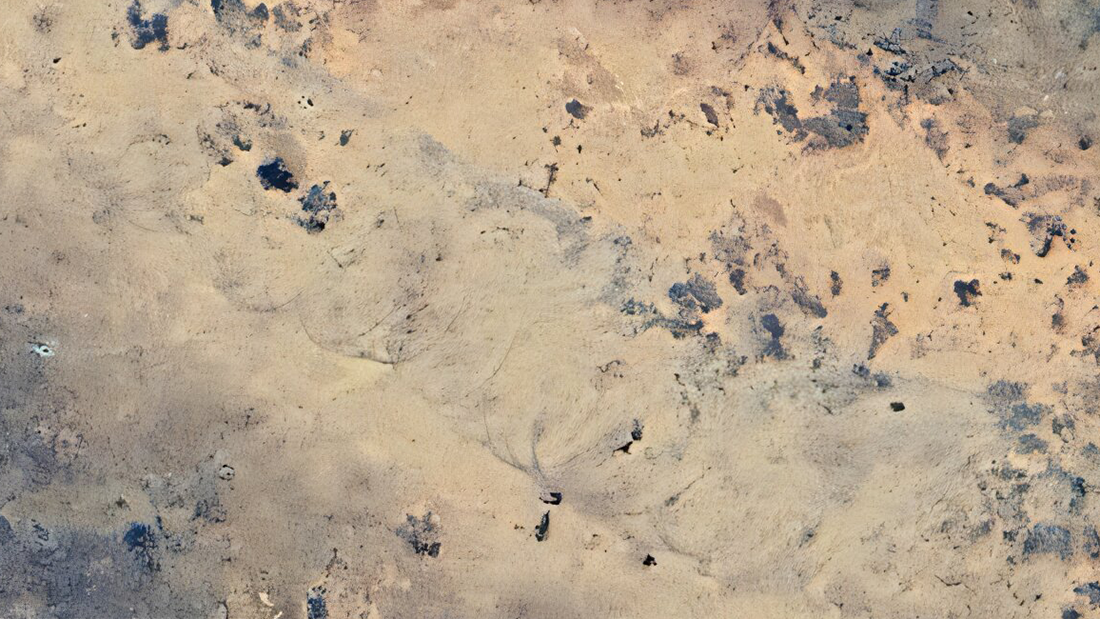A man browsing Google Maps of the Nullarbor Plain in Southern Australia stumbled upon a strange “scar” pattern, prompting further investigation by scientists.
People have discovered all sorts of oddities while browsing through Google Maps, from “aliens” and camera-hogging cats to the answer to decades-old cold cases and meteor impact sites. In this latest find, a caver searching for caves and karsts in the southern Australian outback saw an unusual feature around 20 kilometers (12.4 miles) north of the Trans-Australian Railway, and 90 kilometers (56 miles) east-north-east of an old railway settlement named Forrest. It’s a big one too, measuring around 11 kilometers (6.8 miles) long and between 160 and 250 meters (525 and 820 feet) wide.
Investigating the mark, Matej Lipar, Adjunct Research Fellow at the School of Earth and Planetary Sciences at Curtin University, looked back at older Google satellite imagery, discovering that it first appeared sometime between November 16 and 18, 2022.
“Blue circular patterns appeared alongside the scar, indicating pools of water associated with heavy rain,” Lipar explained in a piece for The Conversation. “Upon closer investigation, we realised the scar was created by a ferocious tornado that no-one knew had occurred.”
The team visited the site and also looked at other historical weather data from the time to investigate the possibility further.
“The weather patterns during this period were marked by the passage of a strong cold front from west to east, coupled with tropical moisture, creating an environment conducive to severe weather,” Lipar writes in a new study. “Cloud imagery indicated intensive cloud cover over the region on 17 November 2022, and nearby weather stations recorded significant rainfall, correlating with the observed scar formation.”
Tornados have been reported plenty of times in Australia before, and have been seen on every continent other than Antarctica.
Monitoring them is of course important, given their destructive capabilities. Though no human settlements or property were nearby, it appears that in November 2022 we missed a reasonably big one. Looking at the weather patterns and marks, the team was able to estimate its strength.
“The characteristics of the scar, including its cycloidal marks indicative of suction vortexes activity, and the analysis of associated weather patterns, indicate a tornado moving in an eastward direction and swirling clockwise, with an estimated strength within the F2 or even F3 category on the Fujita scale, with wind speeds likely exceeding 200 [kilometers (124 miles) per hour],” Lipar added, estimating that it lasted between seven and 13 minutes.

Cycloidal marks helped the team determine the culprit was a tornado.
Image credit: Matej Lipar/Google Earth
The team believes this discovery is particularly important, given how this region is devoid of potential eye-witnesses to tornados, and the lack of infrastructure and property that can alert scientists to the weather phenomenon, ultimately by being damaged by them.
Only three tornadoes have been documented in the Nullarbor Plain, but they could occur more frequently and go unnoticed due to the area’s remoteness. The team suggests that further use of satellite imaging could help study tornados in similarly remote regions, and perhaps even using machine learning could help to identify other tornados we may have missed.
“The improved understanding of tornadoes in such regions can enhance predictive capabilities and aid in the timely dissemination of warnings, ultimately contributing to better preparedness and risk mitigation strategies,” Lipar concluded.
Which is a pretty cool thing to come, ultimately, from a man idly browsing Google Maps in search of caves.
The study is published in the Journal of Southern Hemisphere Earth Systems Science.
Source Link: Man Finds Gigantic "Scar" In Australian Outback On Google Maps. It Was An Important Discovery